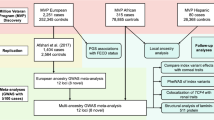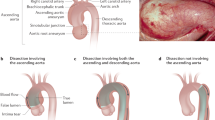Abstract
Purpose
Hallermann–Streiff–Francois syndrome (HSS) is a rare genetic disorder characterised by ocular and craniofacial anomalies. The purpose of this report is to highlight the ophthalmological features in four such patients and outcomes of cataract surgery.
Patients and methods
Retrospective review of medical records of patients with cataract and/or microcornea due to HSS was done. Presenting features, ocular findings, ocular motility and visual outcomes were noted.
Results
We identified four children with microcornea/cataract who had associated clinical features suggestive of HSS. Mean age at presentation was 25.5±27.8 months. Three children presented with poor vision in both eyes and one with strabismus. All patients had a microcornea and microphthalmos. Three patients had a membranous cataract. Horizontal corneal diameter ranged from 5.5 to 10.5 mm and axial length ranged from 12 to 18 mm. Three patients had associated strabismus. Three patients underwent lens extraction and two underwent strabismus surgery. Best corrected visual acuity (BCVA) improved from fixing, following light to a median post-operative BCVA of 20/380. One eye developed retinal detachment.
Conclusion
Children with HSS present with membranous cataracts, microcornea and microphthalmos and present surgical challenges. Though the patients were mostly left aphakic, all showed moderate visual improvement.
Similar content being viewed by others
Introduction
Hallermann–Streiff–Francois syndrome (HSS, oculo-mandibulo-dyscephaly with hypotrichosis) is a rare genetic disorder characterised by ocular and craniofacial anomalies.1 Francois reviewed previous sporadic reports and described this syndrome with seven essential criteria to diagnose dyscephalia with bird face and dental anomalies, nanism, hypotrichosis, cutaneous atrophy, microphthalmia and congenital cataract.1, 2 The purpose of this report is to highlight the ocular features and outcomes in four such patients.
Review of cases
We identified four (two boys and two girls) patients with microcornea and congenital cataract who had associated sparse hair, micrognathia and a beaked nose suggestive of underlying oculo-facial dysplasia, HSS (Figures 1 and 2). Mean age of patients at presentation was 25.5±27.8 months with a range of 30 days to 5 years. Best corrected visual acuity (BCVA) at presentation was fixing and following light (FFL) in both eyes. Presenting complaint was poor vision in three children and one for co-existent strabismus. All patients had a microcornea and microphthalmos. Three patients had a membranous cataract while lens was clear in one.
Case 1
A 3-month-old girl was presented with a complaint of small eyes since birth. Her birth history was unremarkable. On examination, she had blue sclera and her corneal diameter was about 5.50 mm and 5.0 mm in right and left eye, respectively. She had iris atrophy with diffuse posterior synechiae in both eyes. Fundus examination showed peripapillary chorioretinal atrophy in both eyes. Axial length of right eye was 15.29 mm and left eye was 15.79 mm. Refractive error was +14.0 diopters sphere in both eyes. She was prescribed glasses and was advised regular follow-up. However, the child presented 10 months later with a large esotropia of about 70 prism diopters (PD). Binocularly, her BCVA was FFL. Bilateral medial rectus muscle recession of 6.5 mm and right eye lateral rectus muscle resection of 6 mm was done under general anaesthesia. She had 12 PD of residual esotropia. She was advised visual rehabilitation measures.
However, she presented 1 year later with developmental cataract in her right eye. B Scan showed acoustically clear vitreous with deep excavation at the disc area suggestive of coloboma of optic nerve. Corneal diameter was 6mm and there were extensive posterior synechiae. The child was rehabilitated with cataract surgery refractive correction and amblyopia therapy.
Case 2
A 1-month-old boy was brought with complaints of poor vision and cataract. Clinical examination showed microcornea (horizontal corneal diameter (HCD): 9.5 mm both eyes) microphthalmos, total cataract in both eyes and exotropia of 10 PD. Associated craniofacial features suggestive of HSS were noted. The child underwent cataract surgery followed by amblyopia therapy.
Case 3
A 60-month-old girl was brought with a complaint of small eyeball and poor vision. There was severe microcornea (HCD=5.5 mm OU) and axial length of 10 mm and 11 mm, respectively. Both eyes had a membranous cataract and an esotropia of 60 PD. The child underwent cataract surgery followed by medial rectus muscle recession in both eyes.
Case 4
A 36-month-old boy presented with inward deviation of the eyeballs. There was severe microcornea, microphthalmos and esotropia of 45 PD. Lens was clear in both eyes and fundus was within normal limits. The child underwent medial rectus muscle recession of both eyes followed by amblyopia therapy.
At the time of examination under anaesthesia, mean HCD was found to be 7.5±1.9 and 7.7±2.5 mm in right and left eye, respectively. Similarly mean axial length was 16.6±1.9 mm and 16.8±1.6 mm in right and left eye, respectively. Three patients underwent lens aspiration+primary posterior capsulotomy+anterior vitrectomy. Small eyeball, extensive posterior synechiae and membranous cataract were noted in all patients and caused intra-operative difficulties. In all patients, all procedures were performed using an anterior vitrectome. All patients were left aphakic (Figure 3).
Three patients had an associated strabismus, 1 with 10 PD exotropia and 2 with a mean esotropia of 60 PD. All children received spectacle correction, vision rehabilitation measures and amblyopia therapy, where applicable.
All eyes showed an improvement in BCVA except one eye that developed a retinal detachment. Median post-operative BCVA was 20/380 (range: No PL to 20/130).
Discussion
The aetiology of HSS remains unknown. Sporadic occurrences reported are believed to be secondary to a mutation in autosomal dominant gene, with a variable expressivity.3 The underlying mutation in HSS is unknown, however, chromosomal studies have been normal in almost all instances, with few exceptions.4, 5
Ocular manifestations are seen in about 90% of the patients.6, 7 Our study highlights the ophthalmological features in four children. Although literature suggests early-onset congenital cataracts in most children, in our series two patients had late onset (5 years). All of our patients had associated microcornea, microphthalmos and 75% had strabismus. One patient also had a coloboma of the optic nerve. Unlike previous reports,6, 7 none had a low incidence of lid complications like ptosis, entropion and glaucomatous.
Our series highlights the fact that membranous cataracts might be expected in these children and intra-operative difficulty might be encountered due to small eyeball, posterior synechiae and cataract morphology. We recommend a possible use of vitrectome to perform most of the steps in these cases. However, in view of severe microcornea and microphthalmos, aphakia is preferred with visual rehabilitation by glasses.
Our series also highlights high incidence of associated strabismus and possible visual improvement with multiple procedures.
Ophthalmologists should be aware of systemic manifestations in HSS such as dyscephalia with bird face, retrognathia, frontal and/or occipital bossing, delayed closure of fontanelles and sutures and hypoplasia of the mandible.6, 7, 8 Patient might also have dental abnormalities such as absence of teeth, natal teeth, enamel hypoplasia, supernumerary and malformed teeth.6
These patients may also have respiratory abnormalities due to narrow upper airways and glossoptosis. This can predispose the patients to obstructive sleep apnoea, respiratory insufficiency and feeding difficulties. Such children may encounter difficulty during anaesthesia due to difficulty in intubation.9
This report highlights the importance of recognising this rare entity in children presenting with bilateral cataracts and microphthalmos. Since the ophthalmologist may be the first person to examine such children, an appropriate knowledge of the associated conditions may help seek a multidisciplinary approach and management of these patients.

References
David LR, Finlon M, Genecov D, Argenta LC . Hallermann Streiff syndrome: experience with 15 patients and review of the literature. J Craniofac Surg 1999; 10: 160–168.
Francois J . A new syndrome: dyscephalia with bird face and dental anomalies, nanism, hypotrichosis, cutaneous atrophy, microphthalmia, and congenital cataract. AMA. AMA Arch Ophthalmol 1958; 60: 842–862.
Francois J . Francois, dyscephalic syndrome. Birth Defects Orig Artic Ser 1982; 18: 595–619.
Schanzlin DJ, Goldberg DB, Brown SI . HSS associated with sclerocornea, aniridia, and a chromosomal abnormality. Am J Ophthalmol 1980; 90: 411–415.
Jalbert P, Gilbert Y, Leopold Ph, Mouriquand C, Beaudoing A . Hallermann-Streiff-François syndrome: a recent case associated with a karyotypic 4 p-anomaly. Pediatrie 1968; 23: 703–705.
Wiiedmann HR-R . Hallermann–Streiff syndrome. In: Wiedmann H-R, Kunzel J, Diabbern H (eds). An Atlas of Clinical Syndromes, a Visual Aid to Diagnosis 1992; pp 530.
Francois J, Pierard J . The Francois dyscephalic syndrome and skin manifestations. Am J Ophthalmol 1971; 71: 1241–1250.
Sybert VP . Hallermann–Streiff Syndrome. In: Genetic Skin Disorders. Oxford University Press: Oxford, UK, 1997; pp 564–566.
Robinow M . Respiratory obstruction and cor pulmonale in the Hallermann–Streiff syndrome. Am J Med Genet 1991; 41: 515–516.
Acknowledgements
We would like to thank Dr Akhila Acharya for her help with language editing and Mr Chary SBN, Mr G Naresh (photography department LVPEI KAR campus) and Mr Mahalakshmi Naidu (photography department, LVPEI GMRV campus) for their help with the documentation and editing of the photographs. This work was supported by Hyderabad Eye Research Foundation (HERF).
Author information
Authors and Affiliations
Corresponding author
Ethics declarations
Competing interests
The authors declare no conflict of interest.
Rights and permissions
About this article
Cite this article
Pasyanthi, B., Mendonca, T., Sachdeva, V. et al. Ophthalmologic manifestations of Hallermann–Streiff–Francois syndrome: report of four cases. Eye 30, 1268–1271 (2016). https://doi.org/10.1038/eye.2016.161
Received:
Accepted:
Published:
Issue Date:
DOI: https://doi.org/10.1038/eye.2016.161






